
Poster awards – Daria and Alessandra
Congratulations to Daria and Alessandra on their outstanding poster presentations! Daria won a prize in the materials devision general session

Congratulations to Daria and Alessandra on their outstanding poster presentations! Daria won a prize in the materials devision general session

Welcome to our newest lab member Dr. Chengkai Fan. Chengkai received his M.S. degree in Polymer Chemistry from the University

Check out SFU’s newest facility for on-site production of hydrogen and research on clean energy. Representatives from government, industry, organisation
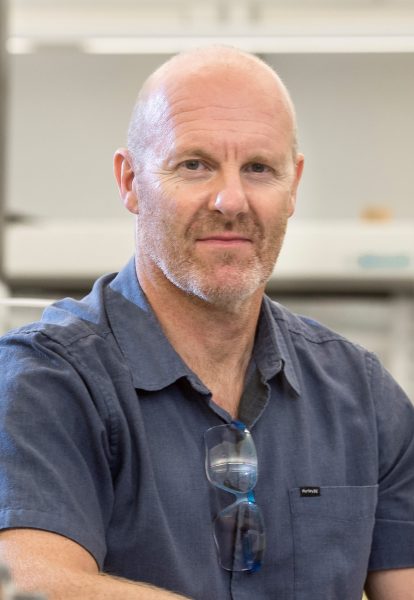
Dr. Steven Holdcroft is the former president of the Canadian Society for Chemistry (CSC), a Professor of Chemistry, and former Chair of the Department. He holds a Tier 1 Canada Research Chair in Electrochemical Materials.
He researches ionic polymers, electrochemistry, and hydrogen-based electrochemical technology. He has authored/co-authored 300+ articles. He was the Technical Program Chair of Pacifichem 2010 and Pacifichem 2015 congresses. He was the Group Chair of NSERC’s Evaluation Group 1504 (Chemistry) and served on the Committee for Discovery Research reporting to the Vice President, Research, NSERC. He serves on the Editorial Advisory Board of the journals Energy and Environmental Science, Electrochemical Energy Reviews, and Journal of Power Sources Advances.
In 2017, with three former students, he cofounded Vancouver-based Ionomr Innovations Inc., a thriving 50+ person SFU spin-out commercializing materials (Aemion and Pemion) for clean energy applications.
For services to the community, Dr. Holdcroft was awarded the Macromolecular Science and Engineering Division Award of the Chemical Institute of Canada (CIC) and is a recipient of the Canadian Society of Canada RioTinto Alcan Award for contributions to electrochemical research. He has received the Outstanding Alumni Award from his alma mater (SFU) for Academic Achievement. In 2024 he was awarded the CIC Montreal Medal for his contributions to the Canadian chemical community and in the same year received the prestigious Governor General’s Innovation Award. He is an elected fellow of the Royal Society of Canada
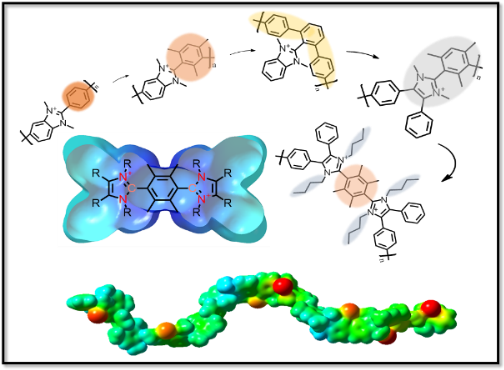
Hydroxide Ion-Conducting Polymers. The Holdcroft group synthesizes and studies hydroxide ion-conducting polymers for alkaline water electrolysis, fuel cells, and CO2 electrolysis.
We designed a new sub-class of polymers, C2-sterically-protected polybenzimidazoliums and polyimidazoliums, which are exceptionally stable under highly caustic conditions at elevated temperatures: J. Am. Chem. Soc. (2012), ACS Macro. Lett. (2014 & 2016), Angewandte Chemie (2016) & Nature Comm. (2019).
We are studying the synthesis of novel proton-containing polymers in order to further understand how polymer structure controls polymer morphology and how morphology facilitates ion-transport.
Our work focuses on multi-phenylated, sulfonated polyphenylenes, and a method to prepare highly controlled, reproducible polymers: J. Am. Chem. Soc. (2015), Angewandte Chemie (2017), Macromolecules (2019 & 2020).
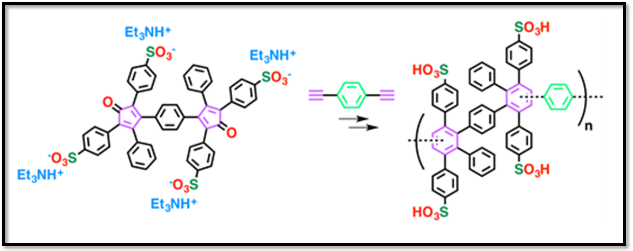
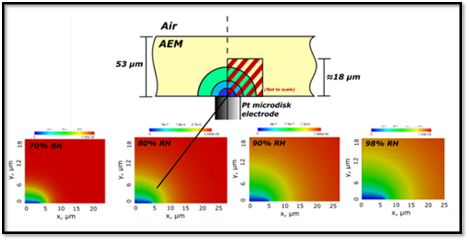
The study of transport of ions, reactant gases, and water in solid polymer electrolytes is of great interest to us. Examples include correlations of proton and hydroxide ion conductivity as a function of water/ion ratio and as a function of membrane morphology, solid-state electrochemistry of dissolved oxygen at membrane/Pt interfaces, and systematic studies of adsorption and diffusion of water: J.Am.Chem.Soc. (2016), ACS Mater.Lett. (2019), J. Mem.Sci. (2019).
We design, fabricate, and analyze various types of electrochemical devices that utilize solid polymer electrolytes.
These include fuel cells, water electrolyzers, and CO2RR electrolyzers, with a focus on component and interfacial phenomenon, and an emphasis on novel materials based on non-fluorous polymeric membranes: J.Electrochem.Soc. (2020), J. Power Sources Adv. (2020), RSC Adv (2020), J. Mem. Sci., (2019), ACS Applied Energy Materials (2019), ChemElectroChem. (2020).
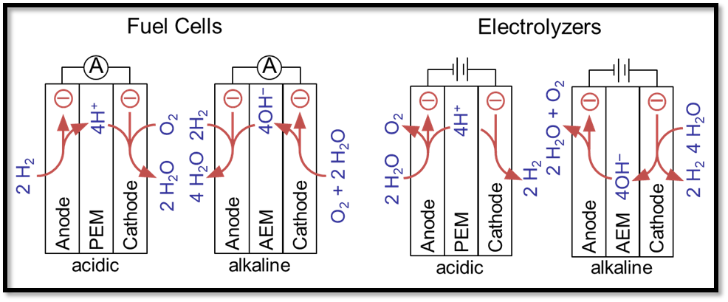
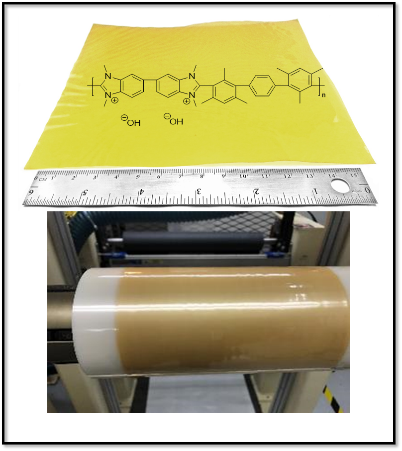
In 2016, with four group members, we founded Ionomr Innovations Inc. to scale up and commercialize hydrocarbon solid polymer electrolyte technology.
Today, this company employs more than 25 people, is central to many global research endeavors researching emerging clean energy technologies. Ionomr has received numerous national and international accolades (Coast Capital Venture Prize, 'Ready to Rocket' list, Hong Kong-Canada Venture Prize, Nouryon International Imagine Chemistry Prize, and the International Start Up Energy Transition (SET) Award.
The Holdcroft Group continues to study chemistry underpinning large scale polymer synthesis and membrane fabrication: Energy Environ. Sci. (2016), Macromolecules (2019 & 2020), J. Mem. Sci. (2020).
Our group has a long history researching π-conjugated polymers (πCPs), particularly their structure-function, solid state, chemically-amplified-, soft-, and, thermal-lithography, their photochemistry, and related macromolecular electronics.
We recently investigates the photoelectrochemistry of conjugated polymers, a concept we introduced in the 90’s and which has re-emerged under the topic, “solar fuels”: Solar Energy Materials and Solar Cells (2019), Synthetic Metals (2019), & Can. J. Chem., 96 (2018).
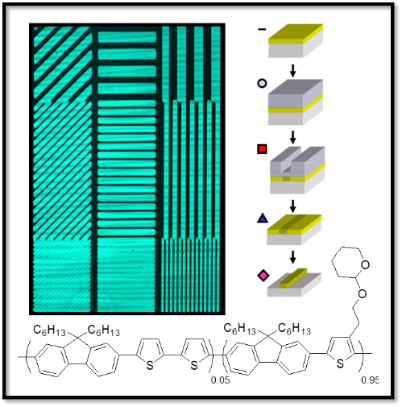
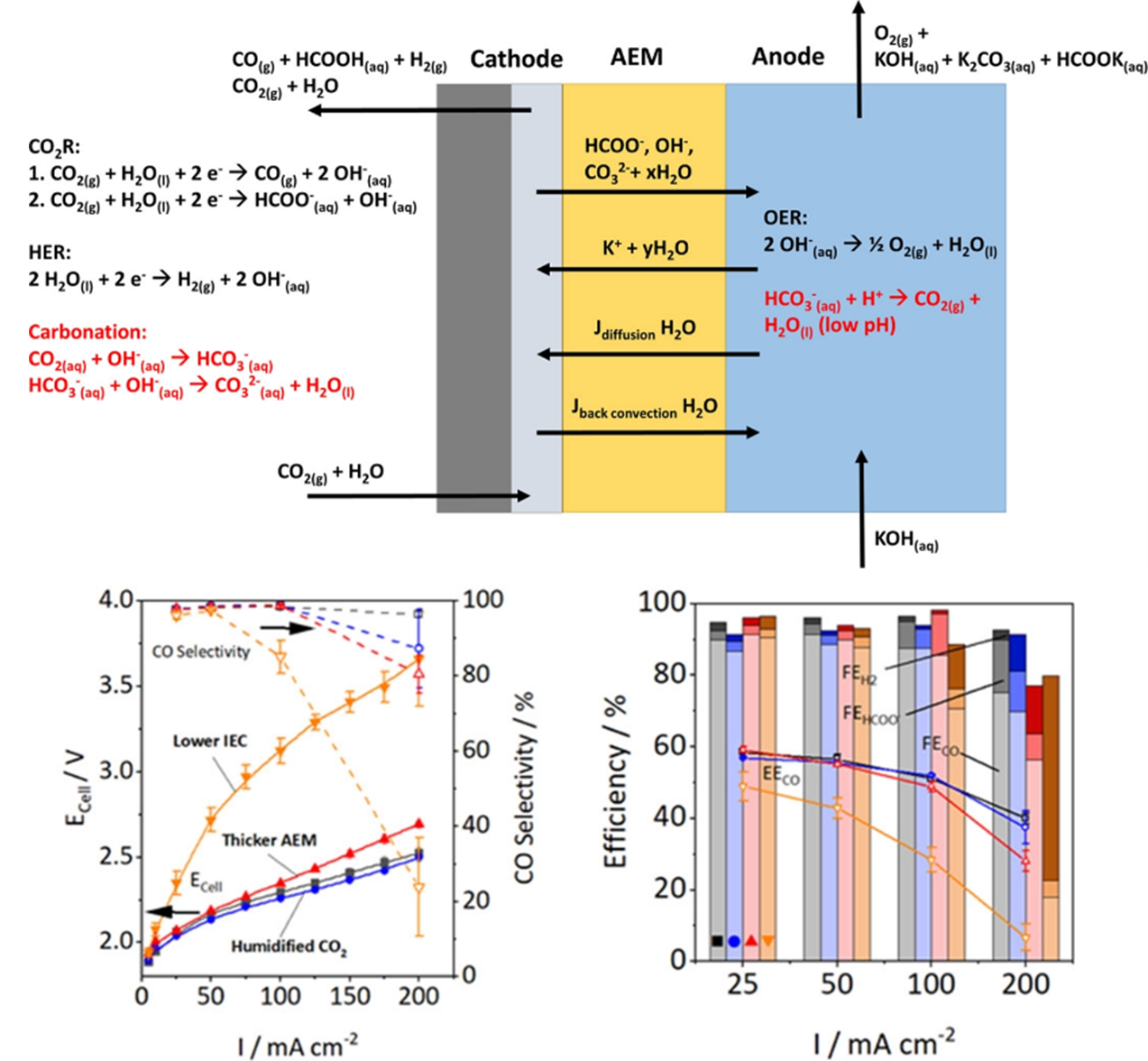
Low-temperature polymer electrolyte-based devices that drive the electrochemical reduction of CO2 and CO towards value added products have become a staple in carbon utilization strategies worldwide. The emergence of novel, cheap catalyst materials and innovative cell designs have opened a pathway towards economic viability of these new kinds of electrolyzers which heavily rely on the performance and durability of the deployed polymer electrolytes.
Our established, highly conductive, and robust anion conducting and cation conducting polymers offer a unique materials platform that allows us to tune specific (transport/stability) polymer properties towards the requirements of these new devices. We study the fundamental processes at the electrode-electrolyte interface that determine the balance of reactants in the cathode catalyst layer, and design membrane-electrode-assemblies that enable efficient and stable CO2 electrolysis.
(Mardle, P.; Holdcroft, S; et al., J Phys. Chem. C. 2021, 125.)
Outstanding undergraduate students from Canada are encouraged to apply for an NSERC Undergraduate Research Award. SFU undergraduate students interested in developing their research skills in areas of polymer chemistry and/or electrochemistry should contact Dr. Steven Holdcroft regarding courses CHEM 481, 482, and 483.
Opportunities are available for exceptional, self-motivated students to enter the Ph.D. or M.Sc. program in the Department of Chemistry. Areas of research include the design, synthesis, study and implementation of electroactive, functional polymers and electrodes. Interested candidates are encouraged to submit a cover letter, CV and a copy of their transcripts to holdcrof@sfu.ca.
New postdoctoral positions become available from time-to-time. Applicants are expected to have expertise in either polymer chemistry, organic materials science, electrochemistry, synthetic organic chemistry. Interested applicants are encouraged to submit a cover letter, CV, and any other information that may be relevant, e.g., a sample publication, reference letters, to holdcrof@sfu.ca. Regrettably, due to the large volume of applications received, only exceptional candidates will be contacted.
Correspondence
Office: SSB 8102
Tel: (778) 782.4221
holdcrof@sfu.ca
Attn: Steven Holdcroft, Professor
Department of Chemistry
Simon Fraser University
8888 University Drive, Burnaby,
Greater Vancouver, BC
Canada V5A 1S6
 Apurva earned both her MSc and PhD in Energy Science and Engineering from the Indian Institute of Technology, Bombay. For her Master’s degree, she focused on metal hydride ceramics as hydrogen storage materials, specifically investigating the kinetics of hydrogen sorption.
Apurva earned both her MSc and PhD in Energy Science and Engineering from the Indian Institute of Technology, Bombay. For her Master’s degree, she focused on metal hydride ceramics as hydrogen storage materials, specifically investigating the kinetics of hydrogen sorption.
Although she began her PhD at IIT Bombay, she completed all her experimental and thesis work at Simon Fraser University (SFU), spending four years as part of our research group. Her PhD research was focused on the ion transport properties and perm-selectivity of anion exchange membranes (AEMs).
Currently, she is working on membranes and catalyst layers for AEM CO2 electrolyzers. In her leisure hours, she enjoys dancing and painting.

Chengkai received his M.S. degree in Polymer Chemistry from the University of Akron, United States, in 2019. He subsequently obtained his Ph.D. degree in Chemistry from the University of Notre Dame, United States, in 2024. His research focused on the design and synthesis of functional polymer and organic/inorganic hybrid materials, emphasizing the structure-property relationships. His recent work on the synthesis of anion exchange membranes was particularly noteworthy and motivated him to join Dr. Steven Holdcroft’s research group to continue his exploration of advanced energy materials.
Outside of research, he enjoys sim racing and playing board games.
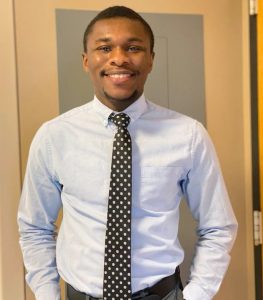
Franklin obtained his BSc in chemistry from Michael Okpara University, Nigeria. He further obtained his MSc in chemistry at Illinois State University, USA where he worked on designing metal nanoparticles/polymer nanocomposites as a stable and effective quasi-homogeneous catalyst in C-C bond-forming reactions.
He is currently working on the incorporation of hydrocarbon-based ionomers and membranes synthesized in our lab into proton exchange membrane water electrolysis.
In his free time, he enjoys playing table tennis or watch soccer games.
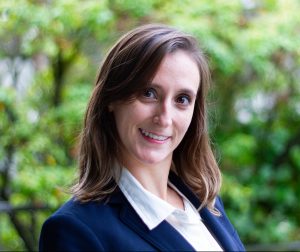
Alessandra obtained her B.Sc. in Chemistry from the Federal University of São Paulo, Brazil, where she also got her M.Sc. and Ph.D. in Science – Chemistry. During her Ph.D., she did part of her studies at the University of Victoria, Canada.
Alessandra’s background is in luminescent polymers and materials, photochemistry, supramolecular systems, and material characterization.
In her free time Alessandra likes to dance ballet, hike, and enjoy new restaurants.
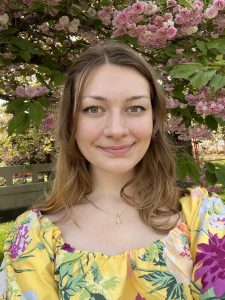
Daria is currently pursuing her B.Sc. in Chemistry and MBB at SFU. She studied HEK293T cells as part of her molecular biology research under Dr. Bingyun Sun.
Daria joined the lab as a USRA student, working on NHC polymers.
In her free time, you may find her exploring Vancouver or crocheting.

Halle received her B.Sc in chemistry from Trent university in Peterborough, Ontario. She spent her final year of undergraduate studies researching in the inorganic materials chemistry lab under Professor Andrew Vreugdenhil, focusing on surface analysis of activated carbon and polymer composites for electrode materials. This experience sparked her interest in green energy storage and electrochemical devices, influencing Halle to join the Holdcroft group to expand her knowledge in polymer synthesis and electrochemistry.
Outside the lab you’re likely to find Halle up before sunrise rowing Burnaby Lake, running, hiking or in the gym.
 Ravinder received his PhD from National Chiao Tung University (NCTU), Taiwan. He also worked as a Postdoctoral Fellow at National Taiwan University (Taiwan) and University of Waterloo (CANADA). During these eras, his research activities focused on the use of cutting-edge synthetic methodologies and technical skills for the design, efficient synthesis, and characterizations of organic chemical entities (small, supramolecular, and polymers w/and w/o post-polymerizations) for multifaceted applications such as Opto-Electronics, Sensory (Chemo-/Bio-Sensors/OTFTs), Photo-Controllable/Stimuli-Responsive, AIE-based materials (Type-I ROS PSs for Photodynamic therapy and Energy-Transfer), and Metal-Organic Frameworks (MOFs).
Ravinder received his PhD from National Chiao Tung University (NCTU), Taiwan. He also worked as a Postdoctoral Fellow at National Taiwan University (Taiwan) and University of Waterloo (CANADA). During these eras, his research activities focused on the use of cutting-edge synthetic methodologies and technical skills for the design, efficient synthesis, and characterizations of organic chemical entities (small, supramolecular, and polymers w/and w/o post-polymerizations) for multifaceted applications such as Opto-Electronics, Sensory (Chemo-/Bio-Sensors/OTFTs), Photo-Controllable/Stimuli-Responsive, AIE-based materials (Type-I ROS PSs for Photodynamic therapy and Energy-Transfer), and Metal-Organic Frameworks (MOFs).
Prior to this, he acquired 4 years of Pharmaceutical-Industrial Experience; where he started as a Full Time Employee (FTE) at Jubilant Chemsys Ltd., India, an innovator in custom organic synthesis of client-based research. Later, he moved to Ind-Swift Laboratories LTD, India, a leading manufacturer of bulk drugs medicines and pharmaceutical raw materials, where he was promoted to Research Associate-I.
In the Holdcroft lab he is joining the synthetic team currently working on developing numerous N-heterocyclic carbene (NHC)-based polymers for surface-binding applications in anti-corrosion.
In his spare time, he enjoys reading novels, playing cricket, cooking, and exploring nature.
 Lindsay is a proud graduate of Dalhousie University, holding a B.Eng in Chemical Engineering and having completed the enriching co-operative education program. Her journey so far has led her to Rayleigh Solar Tech, a dynamic Halifax-based startup, where she immersed herself in a 16-month endeavor to enhance carbon electrode materials for perovskite solar cells.
Lindsay is a proud graduate of Dalhousie University, holding a B.Eng in Chemical Engineering and having completed the enriching co-operative education program. Her journey so far has led her to Rayleigh Solar Tech, a dynamic Halifax-based startup, where she immersed herself in a 16-month endeavor to enhance carbon electrode materials for perovskite solar cells.
Lindsay is joining the team working on anion exchange membranes and their deployment in alkaline water electrolyzers.
Beyond her professional passion, Lindsay finds joy in running and cycling.
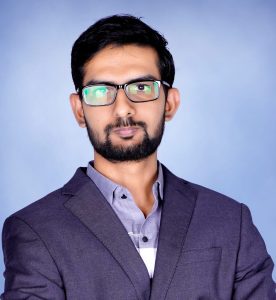 Subash holds a master’s degree from the Indian Institute of Technology, Madras, India, specializing in metallic bipolar plates for PEM fuel cells.
Subash holds a master’s degree from the Indian Institute of Technology, Madras, India, specializing in metallic bipolar plates for PEM fuel cells.
He gained industry experience as a junior manager before pursuing a collaborative Ph.D. program between SFU and the Indian Oil Corporation. His research focuses on exploring different catalysts and ion exchange membranes for fuel cells, CO2 electrolysis, and electrolyzer applications.
Outside of his work, Subash enjoys traveling and exploring nature.
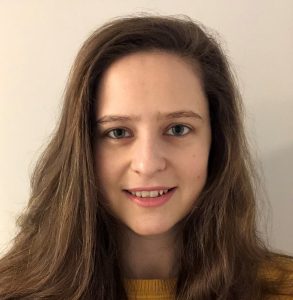
Marina obtained her PhD from the Karlsruhe Institute of Technology in Germany, where she worked on the surface modification of graphite electrodes for lithium-ion batteries. During her PhD, she spent four months at Trinity College in Dublin, Ireland, synthesising organic linkers for metal-organic frameworks.
She joined the group to pursue her interest in synthesising polymeric materials for electrochemical devices.
In her free time, she enjoys playing soccer, singing and making music.
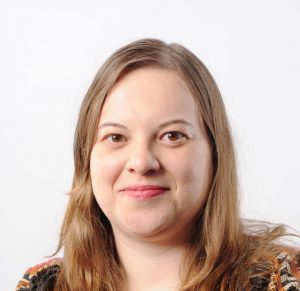 Ana Laura obtained her B.Sc. in Chemistry from the University of São Paulo, Brazil. She did part of her undergraduate studies at the Institut Polytechnique de Grenoble, France, where she had her first contact with electrochemistry. She has a Ph.D. in Physical Chemistry from the University of São Paulo with one year done at the University of Surrey, UK. She also did a 2 years post-doc at the Nuclear and Energy Research Institute (IPEN), Brazil, in collaboration with Shell.
Ana Laura obtained her B.Sc. in Chemistry from the University of São Paulo, Brazil. She did part of her undergraduate studies at the Institut Polytechnique de Grenoble, France, where she had her first contact with electrochemistry. She has a Ph.D. in Physical Chemistry from the University of São Paulo with one year done at the University of Surrey, UK. She also did a 2 years post-doc at the Nuclear and Energy Research Institute (IPEN), Brazil, in collaboration with Shell.
Ana Laura has experience in membrane and ionomer synthesis (using radiation-induced grafting), materials characterization, and application in PEMFCs and AEMFCs.
During her free time, Ana Laura likes to travel, train BJJ, and enjoy nature.
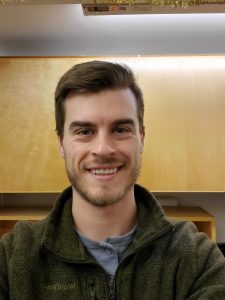 Matthew received his Bachelor’s in Chemistry from the University of British Columbia Okanagan focusing on organic and analytical chemistry.
Matthew received his Bachelor’s in Chemistry from the University of British Columbia Okanagan focusing on organic and analytical chemistry.
In his final year of studies, he worked for Progressive Planet Solutions Inc. furthering their pozzolanic cement development before transferring to InnoTech Alberta to join the Bio-Thermal Chemical Processing Team and assist on the development of electrochemical grade activated carbon products made from Canadian industrial waste for use in supercapacitors and lithium sulfur batteries. This project is now in the scale up phase and being prepared to launch to market.
In his free time you can find him out fly fishing and camping.
 Binyu graduated with a B. Eng. in Chemical Engineering from East China University of Science and Technology and a M. Sc in Chemistry from Memorial University of Newfoundland.
Binyu graduated with a B. Eng. in Chemical Engineering from East China University of Science and Technology and a M. Sc in Chemistry from Memorial University of Newfoundland.
Before joining Dr. Holdcroft’s group, he worked on developing more efficient anode catalysts for direct ethanol fuel cells.
Now, he starts to study the water electrolysis on our anion exchange membrane (HMT-PMBI). In his free time, you may find him in the gym.